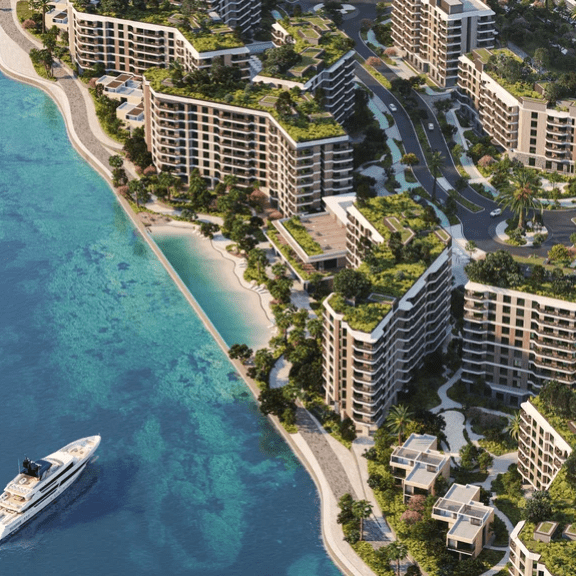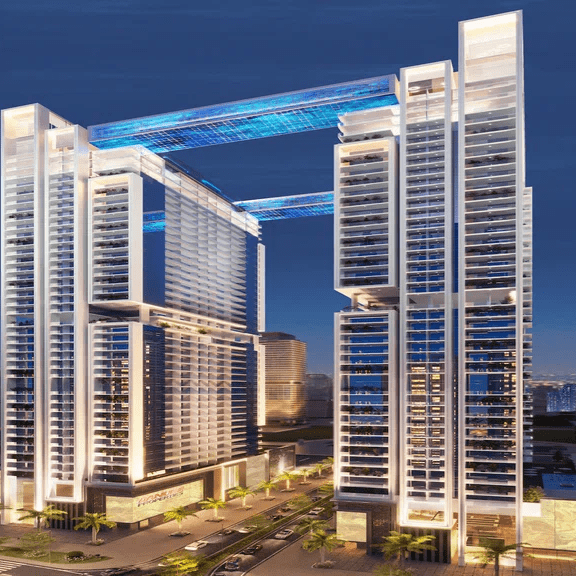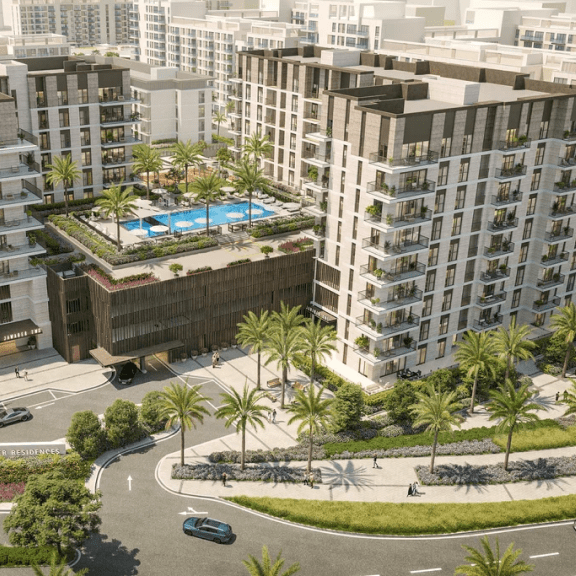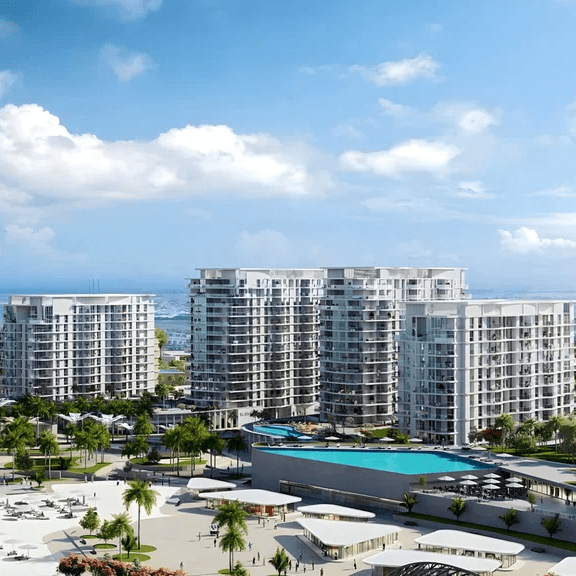Escalating real estate prices, elevated rental rates, a rising influx of expatriates and tourists, and favorable tax laws render Dubai highly appealing to new investors. Nevertheless, before embarking on property investments in the region, it is crucial to compute the total required investment amount, encompassing all fees, commissions, and other expenditures. Additionally, it is essential to calculate the potential return on investment.
The Simplest Formula
ROI (Return on Investment) or ROR (Rate of Return) is a financial ratio that indicates your business's profitability or loss relative to the amount invested or estimated investment in your business. Typically, this indicator is expressed as a percentage of the asset's value.
The simplest and at the same time the most effective ROI formula is the following:
(A – B) ÷ В
where A is the total return on investments at the end of the period (or at the given moment) and B is the total amount of investments.
Multiply the result by 100 to turn it into a percentage.
What comprises the total amount of investments (indicator B)?
- The property’s purchasing price.
- Transaction costs.
- Repair costs (if applicable).
- Down payment on a mortgage loan (if it is used to pay for the property).
New buildings in the UAE
Calculating the ROI on a Real Estate Property in Dubai
Expenses
As an example, let's walk through a comprehensive ROI calculation for a fully finished, furnished, and equipped 51 sq. m. studio apartment with a panoramic view in The Address, a five-star apartment hotel located in Dubai Marina, adjacent to the Dubai Marina Mall. The property is priced at AED 1,350,000 ($367,600). To this amount, add the transaction costs:
- Payment to the Dubai Land Department (DLD) — 4% of the property cost, which is AED 54,000 ($14,700),
- NOC (no objection certificate) — estimated AED 3,000 ($816),
- Land fee — AED 430 ($117),
- Registration fee — AED 4,000 ($1,088) + 5% VAT, total AED 4,200 ($1,143),
- Real estate agency commission — 2% of the property cost, which is AED 27,000 ($7,300).
Total transaction costs: AED 88,630 ($24,080).
Total investment: AED 1,350,000 + AED 88,630 = AED 1,438,630. Let us round it up to AED 1,439,000 ($391,800).
Income
A studio apartment of this kind can be leased for an annual average of AED 107,000. In this scenario, the property's payback period would be 13.5 years (calculated as 1,439,000 ÷ 107,000).
You don't necessarily have to wait for the entire payback period. For instance, you can choose to sell this studio apartment within five years. Taking into account the price trends observed over the past five years (with a growth of +11.3% from 2017 to 2022), it's reasonable to project a 10% increase in the property's value, resulting in a resale price of AED 1,485,000 ($404,300).
Seascape (Housearch)
In this case, the ROI calculation is as follows:
- Indicator A. Total income over five years of ownership: AED 1,485,000 ($404,300) + (AED 107,000 x 5) = AED 2,020,000 ($550,000).
- Indicator B. Total investment: AED 1,439,000 ($392,000).
- The ROI is calculated according to the above mentioned formula: (A – B) ÷ B = 0.4
We can calculate the total ROI by multiplying 0.4 by 100, which results in a total ROI of 40% over five years, equivalent to 8% per annum. It's important to note that the ROI might be slightly lower in case of unforeseen circumstances. For instance, if the lease agreement expires, and the tenant decides not to renew it, finding a new tenant immediately can be challenging. Additionally, unexpected repairs or equipment replacements may be necessary, which could impact the ROI.
Conversely, achieving a higher ROI is possible by securing a higher rental rate for the studio apartment. To do this, it's advisable to prioritize short-term leases over long-term ones. Additionally, if property prices in Dubai Marina experience a more significant increase, say 15% instead of 10%, the ROI for five years would reach 45%, equating to 9% per annum.
Adding the Mortgage
In the previous calculation, we intentionally omitted mortgage costs, as leveraged investments are calculated differently from those made solely with your own funds. Let's revisit the same example to understand how it works.
Let us assume that you have a mortgage loan with the following parameters to pay for your property:
- Loan funds: 60% of the property cost – AED 810,000 ($220,500),
- Down payment from your own funds: 40% – AED 540,000 ($147,000),
- Loan rate – 5.5%,
- Loan period – 20 years,
- Monthly payment – AED 5,500 ($1,500).
Mortgage Costs
Now, let's include some transaction costs in our analysis. When applying for a mortgage in the UAE, potential borrowers can expect the bank to charge a commission for reviewing their application. The bank will also require a property valuation and insurance. Additionally, borrowers may need to pay for life and health insurance before the loan is approved. Furthermore, registering a mortgage agreement with the Dubai Land Department incurs a separate fee.
All of this will incur the following additional costs:
- Application processing fee: 0.5% of the property cost — AED 6,750 ($1,840),
- Commission for the property valuation: AED 3,675 ($1,000),
- Property insurance: 1% of its cost — AED 13,500 ($3,680),
- Registration of the mortgage agreement: 0.25% of the loan amount — AED 2,025 ($551),
- Borrower's life insurance: 0.3% of the loan — AED 2,430 ($662).
Total: AED 28,380 ($7,730).
How much will an investor spend initially?
The total initial transaction costs from your own funds will consequently amount to the following:
- Down payment – AED 540,000 ($147,000),
- Transaction costs – AED 88,630 ($24,080),
- Mortgage costs – AED 28,380 ($7,730).
Total: AED 657,000 ($178,900).
Photo: jcomp (Freepik)
Calculating the ROI with a Mortgage
First, let's calculate the net annual income. We'll subtract the annual mortgage payments from the annual rental income: AED 107,000 - (AED 5,500 x 12). This results in a net annual income of AED 41,000 ($11,200).
To calculate the return on investment (ROI) for this studio apartment, we divide the annual income by the initial personal expenses of the investor and then multiply the result by 100 to get a percentage:
AED 41,000 ÷ AED 657,000 = 0.062 x 100 = 6.2% per annum.
This strategy does not involve reselling the property during the initial years, which means the investor may experience a period of loss without any income. Additionally, there may be expenses related to property maintenance or furniture replacement over time, causing fluctuations in ROI. However, the ROI can potentially increase, perhaps even surpassing the initial level, if positive changes occur in the complex or its surroundings during property renovations. These changes could include improvements in transport accessibility, landscaping of the area, or the development of new parks and infrastructure facilities nearby.
It's important to mention that mortgage rates in the UAE are typically linked to the Emirates Interbank Offered Rate (EIBOR), which is subject to revision every three months. Even if the loan agreement initially specifies fixed payments, this arrangement remains in effect for a maximum of five years for any borrower. After this period, "floating" payments may apply, which can either increase or decrease the mortgage payment. This variability makes it challenging to accurately calculate the ROI beyond the initial five years of ownership.
Flipping and the 70% Rule
Real estate flipping is a business centered around identifying distressed properties that require repair, renovation, and various improvements. These properties are typically available at prices below the market average for the same location. Once acquired, an investor invests their own capital in enhancing the property, which may involve essential repairs, furniture replacement, or comprehensive renovations, including landscaping, swimming pool upgrades, and patio pavement in the case of vacation homes. Subsequently, the property is sold to generate a profit.
When you need to quickly assess whether a distressed asset can yield the anticipated profit, consider using the 70% rule. This rule takes into account factors such as the cost of repairs and other enhancements, as well as the ARV (after-repair value), which represents the property's estimated value after renovation.
The 70% rule implies that the investor must pay no more than 70% of the ARV minus the renovation cost.
For instance, consider an investor who comes across an apartment located in a 20-year-old building. The furnishings and appliances within the unit are also approximately two decades old. Some of them are already malfunctioning, while others are on the verge of breaking down. Although the building as a whole has undergone renovations over the years, this specific apartment has not received any updates. It is in dire need of a comprehensive overhaul, including reconstruction, renovation, and refurbishment.
Let's assume the investor estimates the cost of renovating such an apartment at 150,000 AED ($32,700) and anticipates that the property will be worth 2,000,000 AED after the renovation. Therefore, you should multiply this amount by 0.7, resulting in 1,400,000 AED ($381,000). Then, subtract 150,000 AED ($32,700) from it, yielding 1,250,000 AED. This represents the maximum reasonable purchase price for this property.
In a Nutshell
Calculating the return on investment for Dubai properties is relatively straightforward, with clear formulas and a stable market. However, it's crucial to monitor parallel mortgage costs, which are often linked to the EIBOR and subject to revision every three months.
Cover photo: freepik




